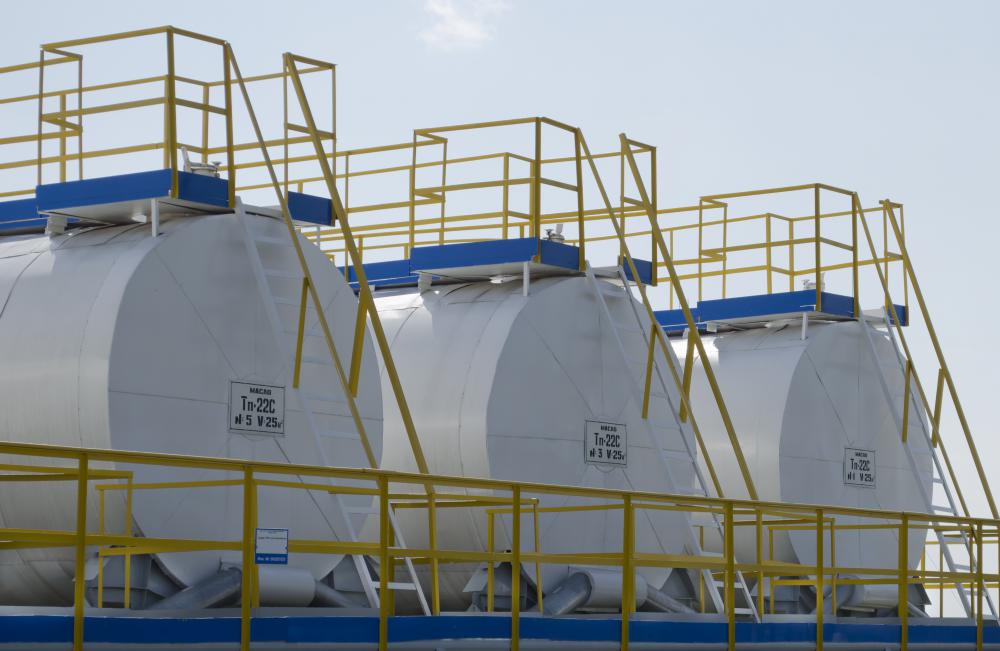At WiseGEEK, we're committed to delivering accurate, trustworthy information. Our expert-authored content is rigorously fact-checked and sourced from credible authorities. Discover how we uphold the highest standards in providing you with reliable knowledge.
What is a Rainwater Cistern?
In especially dry parts of the world, such as the desert southwest in the United States, African countries, and the Middle East, it has become a regular practice to collect rainwater for landscape and gardening purposes. One of the more efficient methods of collecting rainwater is the use of a rainwater cistern, which is a barrel or tub that collects rainwater and keeps it from evaporating. In the past, a rainwater cistern would be underground to protect the harvested rainwater from evaporation or contamination, and while this is still a common practice, small and medium barrels above ground are more common and much easier to install and use.
A rainwater cistern can be made out of a variety of materials, such as plastic, porcelain, fiberglass, or ceramics. The material must be waterproof to prevent leaks, and it must be non-toxic to prevent leaching chemicals into the water supply. A rainwater cistern can vary in size from very small to extremely large; most large cisterns are underground tanks, while smaller, consumer-friendly models can be purchased and placed above ground. The rainwater collected is almost always cleaner and more abundant than groundwater, making it more valuable and useful for most purposes.

Many aboveground rainwater cistern barrels have a tap built into the bottom so that a garden hose can be attached to it. The water is gravity-fed, and though the system is typically low-pressure, it is pressurized enough that it can be used to water the garden or the grass. The rainwater cistern is generally sealed except at its lid, which is screened so that water can pass through without larger contaminants getting into the barrel. When a rainwater cistern barrel is placed underneath a heavy flow of rainwater--underneath a gutter, for example--the barrel can fill with water useful inside and out of the home.

As with any untreated water, the collected rainwater in your rainwater cistern should be considered non-potable until it has been boiled or otherwise treated. Many larger rainwater cistern collection systems have built-in filtration units that allow clean, potable water to flow into the home for safe use in most, if not all, applications. However, most inexpensive, above-ground consumer versions do not include filtration systems. Higher-end cistern models can also include a pressurization system that sends the collected water into the home at pressures high enough to be useful in sinks, tubs, toilets, etc., but these cisterns tend to be very expensive and can be subject to significant installation costs.
AS FEATURED ON:
AS FEATURED ON:












Discussion Comments
Some Mediterranean countries have long spurts of droughts, particularly during the summer. It used to be that everybody who had space and who could afford it had an underground cistern.
I think it is a good idea to collect rain water and use it for gardening purposes. And with today's technology and and easy and inexpensive availability of containers it is just wise to collect some of the rain water and use it when needed.
One thing i notice is that the first rain, after a longer period of dry weather, is not clean. All the particles from the air and roof make the water dirty.
Post your comments